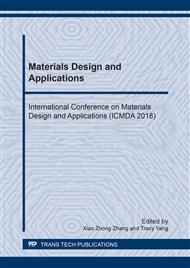p.69
p.77
p.83
p.89
p.97
p.107
p.115
p.123
p.129
An Infrared Frequency Selective Surface with Dual Stopband
Abstract:
In order to get the low transmission rate in both mid infrared atmospheric window and far infrared atmospheric window, an infrared frequency selective surface composed of two layers based on hexagonal ring structure was designed. Simulation analysis using CST electromagnetic software shown that the frequency selective surface had two stopbands in both 3μm~5μm and 8μm~15μm regions, of which the average transmittance is lower than 2.5%. Therefore, this frequency selective surface realized two stopbands in infrared wavebands; This paper analyzed the filtering mechanism of the frequency selective surface based on the effective medium theory. In the end, this paper researched the effect of electromagnetic wave polarization mode, incident angle and dielectric layer thickness on the transmission properties of the frequency selective surface. The results revealed that the transmission of frequency selective surface is insensitive to polarization mode and incident angle, while the dielectric layer thickness is an important factor to the transmittance of frequency selective surface.
Info:
Periodical:
Pages:
97-104
Citation:
Online since:
October 2018
Authors:
Keywords:
Price:
Сopyright:
© 2018 Trans Tech Publications Ltd. All Rights Reserved
Share:
Citation:


